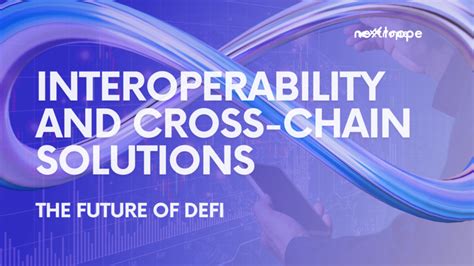Exploring Cross-Chain Solutions for Interoperability
In the world of cryptocurrency, interoperability is a crucial concept that has gained significant attention in recent years. The increasing complexity and diversity of cryptocurrencies have led to new challenges in achieving seamless interactions between different chains. This article delves into the concept of cross-chain solutions, their benefits, and the efforts being made to bridge the gaps between various blockchain networks.
What are Cross-Chain Solutions?
A cross-chain solution is a technology that enables the transfer of assets or data between blockchain networks without the need for direct peer-to-peer transactions. This approach allows different chains to interact with each other seamlessly, facilitating the exchange of value, data, and functionality across multiple platforms. Cross-chain solutions can be implemented using various techniques, including:
- Layered scaling: Using a consensus algorithm on one chain while off-ramping to another.
- Inter-blockchain communication protocols (IBCPs): Such as Optimistic Rollups or Polkadot’s Relay Chain, which enable cross-chain interactions through indirect means.
- Zero-knowledge proofs: Utilizing cryptography to prove the ownership and state of assets without revealing their details.
Benefits of Cross-Chain Solutions
The implementation of cross-chain solutions offers numerous benefits for the cryptocurrency ecosystem:
- Increased interoperability: Allowing users to access a wider range of applications, services, and platforms.
- Improved scalability: Enhancing the overall usability of blockchain networks by reducing congestion and increasing transaction throughput.
- Reduced costs: Minimizing fees associated with cross-chain transactions and data transfers.
Current State of Cross-Chain Solutions
Several projects are actively working on implementing cross-chain solutions, including:
- Polkadot (PAR): A decentralized platform that enables interoperability across multiple chains using IBCPs.
- Solana’s Interoperability Model: Providing a framework for building cross-chain applications and interacting with other chains.
- Avalanche Network: A layer-1 scaling solution designed to support inter-chain interactions.
Challenges and Future Directions
While the concept of cross-chain solutions holds great promise, several challenges remain:
- Security risks: Ensuring the integrity and security of data exchanged between chains.
- Interoperability limitations: The need for more robust protocols and standards to overcome interoperability issues.
- Regulatory hurdles: Addressing regulatory requirements and ensuring compliance with existing laws.
To address these challenges, it’s essential to continue innovating and improving cross-chain solutions. Future developments in this field may include:
- Improved security measures: Enhancing the cryptographic protection of data exchanged between chains.
- Standardization: Establishing common standards for interoperability and security protocols.
- Regulatory frameworks:

Developing more comprehensive regulatory frameworks to support the growth of cross-chain ecosystems.
Conclusion
The exploration of cross-chain solutions offers a promising approach to achieving seamless interoperability across different blockchain networks. As the cryptocurrency ecosystem continues to evolve, it’s essential to stay informed about the latest developments and innovations in this field. By working together, we can create more efficient, scalable, and secure blockchain systems that cater to the diverse needs of users worldwide.
References:
- “Polkadot (PAR)” (2020). Polkadot Documentation.
- “Solana’s Interoperability Model” (2020). Solana Community Blog.
- “Avalanche Network” (2020).
